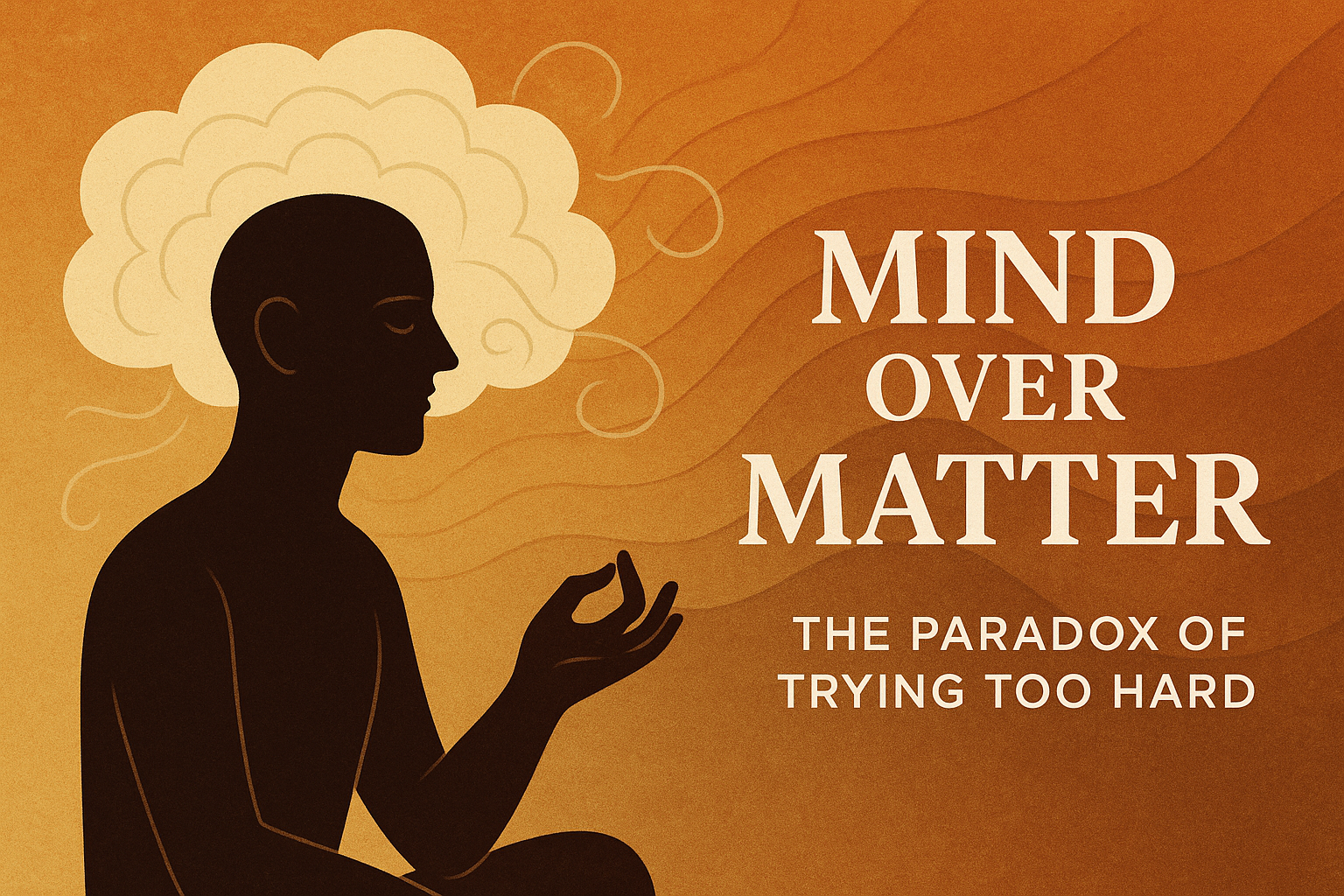Embrace Action Over Perfection
Why Doing It Wrong Beats Waiting to Do It Right

In a world where we’re constantly encouraged to perfect our plans, collect every bit of information, and avoid mistakes, there’s an ironic truth: the person who’s willing to “do it wrong” is often ahead of the person who’s still planning to “do it right.” Action—even imperfect action—has a momentum that planning can’t replace. Embracing action despite incomplete information can propel us forward faster and more effectively than waiting for the elusive “perfect plan.”
The Pitfall of Perfectionism
Many of us fall into the trap of over-preparing, waiting until we’re absolutely sure before we make a move. We don’t want to fail; we want to get it right the first time. But here’s the reality: no amount of planning can account for every possible outcome. We often delay action out of fear of doing it wrong or because we think we need more information. Meanwhile, the person who’s willing to take a leap, even without all the answers, is already learning, growing, and progressing.
The pursuit of perfection can actually stall progress. It keeps us locked in a cycle of overthinking, doubting, and avoiding the very actions that could bring us closer to our goals. The truth is, real growth happens when we’re willing to act, learn from our mistakes, and adjust as we go. The person who takes the first step, however imperfectly, learns more from experience than the person who’s waiting to take the “perfect” step.
The Power of Imperfect Action
Imperfect action is a catalyst. It sets things in motion, allowing us to gather feedback, pivot, and improve as we go. Think of it like trying to learn how to swim: you can study swimming techniques, watch videos, and analyze every stroke, but until you get into the water, you won’t truly know what it’s like. Similarly, by taking action, you gain insights that planning alone could never give you.
When we take imperfect action, we’re building resilience. We’re learning to adapt to challenges, accept mistakes, and make necessary adjustments. Each attempt brings us closer to our goal, often faster than we expected. Embracing action without having all the answers encourages a growth mindset, where we view each step as part of the learning process.
Learning to Embrace Incomplete Information
One of the main reasons people hesitate to take action is the feeling of not having enough information. We want to feel prepared, to minimize risks and uncertainties. However, in most cases, waiting for complete information is not only unrealistic but also counterproductive. Life is full of unknowns, and there will never be a time when you have all the answers. Embracing action with incomplete information doesn’t mean being reckless; it means being willing to learn and adapt as you go.
Consider entrepreneurs who launch products before they’re perfect. They rely on real-world feedback to refine and improve, knowing that action and iteration often lead to better results than endless planning. Similarly, we can embrace the unknown and trust that we’ll gather the information we need along the way. The act of doing often reveals insights that can’t be found through analysis alone.
Why Doing It “Wrong” Often Leads to Doing It Right
When you’re willing to “do it wrong,” you open yourself up to possibilities that planning alone can’t provide. Mistakes become lessons, and missteps guide you to a better path. The fear of failure often holds people back, but those who dare to try, even imperfectly, gain a better understanding of what works and what doesn’t.
Success is rarely a straight line. It’s more like a winding path filled with trial and error, adjustments, and learning moments. By taking action, even if it means stumbling, you’re making progress. You’re building momentum, and with each attempt, you’re getting closer to achieving your goal. The person who’s “doing it wrong” is learning faster and moving forward, while the person still planning is left standing still.
The Momentum of Action
There’s an incredible power in momentum. Taking action, however small, creates energy and focus. Once you’ve started, it’s easier to keep going. Every action builds upon the last, creating a chain reaction that pushes you toward your goal. This momentum is something that planning alone can’t provide.
When you start moving, you’re more likely to attract opportunities, support, and insights that wouldn’t have appeared otherwise. People who see you taking action are often willing to lend a hand or share advice. Opportunities arise that weren’t visible from the planning stage. By embracing action, you’re not just progressing—you’re inviting new possibilities into your journey.
Shifting from Perfection to Progress
Shifting your mindset from perfection to progress can be transformative. Instead of focusing on getting everything right, focus on taking one step forward. Embrace the idea that each action brings you closer to your goal, regardless of whether it’s perfect. Progress is made through accumulated efforts, through a series of steps that might not look flawless individually but create something powerful collectively.
Give yourself permission to make mistakes. Let go of the need for a flawless start and recognize that every successful journey is filled with moments of trial, error, and adaptation. When we prioritize progress over perfection, we unlock our potential to move forward with courage and resilience.
Final Thoughts
The person willing to take action, even imperfectly, will always be a step ahead of the one waiting for the perfect moment. Incomplete information, uncertainty, and the possibility of mistakes are all part of the process. By embracing action, we open ourselves to growth, momentum, and the invaluable lessons that only experience can provide.
So, the next time you find yourself overthinking or hesitating, remember that doing it “wrong” often beats waiting to do it “right.” Embrace action, take that first step, and trust that the path will reveal itself along the way. Progress isn’t made by perfect plans; it’s made by imperfect steps that keep you moving forward.
Share









